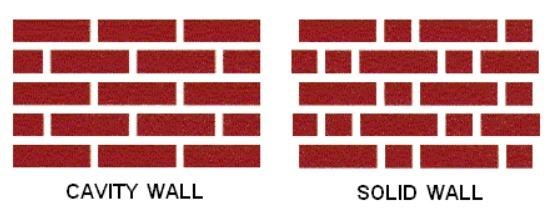The Advantages of Cavity Wall Insulation
FreeInsulation Blog - 19th March 2019
What is cavity wall insulation?
This is insulation material made of mineral wool, polystyrene beads or sometimes polyurethane foam. It is installed inside the gap between two exterior walls.
How can I tell if my home has cavity wall insulation?
Generally speaking, all homes built after 1982 should have wall insulation built in, so if your house is older than that it might not have any wall insulation at all. UK houses in general either have cavity walls or solid walls. If your home was built from 1920 onwards it most likely has cavity walls. This means that your house is made up of two walls with a gap in between. The outer wall will probably be made of brick, while the inner wall made either of brick or concrete block. Houses built before 1920 usually have solid walls, with no cavity inside.
How do I tell if I have cavity walls or solid walls?
Here’s how to work out what type of walls your house has. If your outside walls are not covered and you can see the bricks, you can work out if you have cavity walls by looking at the pattern of the brickwork:

If you can’t see the bricks because they are covered, then you will need to measure the width of a wall. Take a look at a door or window on one of the external walls. If the brick wall is more than 26cm thick then it most likely has a cavity. If it is narrower than this then it is probably a solid wall.
If the outside wall is made of stone it will be thicker but will be solid. If your house is steel or timber-framed then you will need to ask a specialist for advice.
What are the benefits of having cavity wall insulation?
Approximately one third of all the heat lost in an uninsulated home escapes through the walls, so without cavity wall insulation it will cost you more money to heat your home. In England, Scotland and Wales, here’s how much you could save per year by having Cavity Wall Insulation fitted:
detached house – £245
semi-detached house – £145
mid terrace house – £90
bungalow – £100
flat – £70
(based on fuel prices as of April 2018, estimates based on a gas-heated home)
How is cavity wall insulation fitted?
If your home has cavity walls then insulation material can be blown in or injected from the outside. Holes would be drilled into the outside walls, the insulation installed through the holes, then the holes would be sealed with cement. For an average size house this job takes approximately two to three hours to complete.
How can I apply for a grant?
Please see our Cavity Wall Insulation page for more information.
